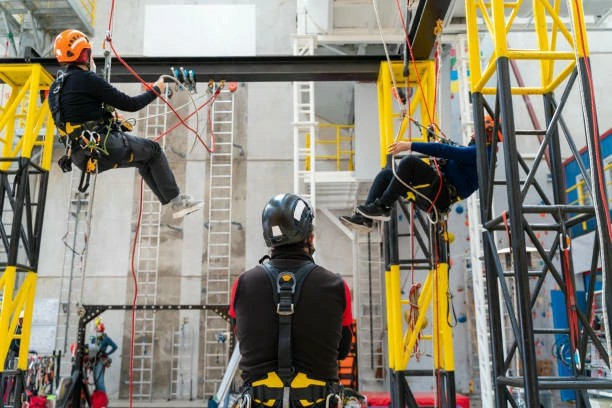Navigating Weather Challenges in Working at Heights: Essential Safety Tips
When it comes to Working at Heights, safety should always be the top priority. Weather conditions play a significant role in determining the safety risks that workers face on elevated surfaces. Understanding these risks and being adequately trained can help mitigate the dangers posed by weather elements such as strong winds, rain, snow, and icy surfaces.
The Impact of Weather on Working at Heights
Weather conditions can adversely impact both the stability of working surfaces and workers' ability to maintain balance. Here’s how various weather factors contribute to safety hazards:
1. Strong Winds
- Wind can create instability for scaffolding and ladders, increasing the risk of falls.
- High winds can lead to difficulty in controlling tools and equipment, further escalating safety risks.
- Workers may experience challenges in maintaining their balance while working at heights during strong winds.
2. Rain and Wet Conditions
- Rain makes surfaces slippery, drastically increasing the risk of slips and falls.
- Wet tools and equipment can cause electrical hazards, presenting additional dangers when working at heights.
- Reduced visibility during rain can make it challenging to see hazards or other workers on-site.
3. Icy Surfaces and Snow
- Ice on ladders, roofs, and platforms drastically raises the risk of falls.
- Snow accumulation can obscure potential hazards or lead to structural failures.
- Cold temperatures can make workers less adept at maneuvering and using their tools effectively.
4. Extreme Temperatures
- Extreme heat can lead to heat stress, requiring workers to stay hydrated and take regular breaks.
- Cold weather can cause hypothermia and frostbite, especially when workers are exposed for extended periods.
Best Practices for Staying Safe in Adverse Weather Conditions
To ensure safety while Working at Heights in challenging weather, consider implementing these best practices:
- Regular Risk Assessments: Evaluate weather conditions before beginning work and continuously monitor throughout the shift.
- Use Proper Personal Protective Equipment (PPE): Ensure that all workers are wearing appropriate gear, such as non-slip footwear, insulated clothing, and harnesses.
- Secure Tools and Equipment: Use lanyards or other securing methods to prevent tools from falling due to wind or other factors.
- Establish Clear Communication: Use radios or other communication tools to relay information about weather changes and safety concerns.
- Develop a Weather Response Plan: Outline protocols for delaying work or moving to safety during adverse weather conditions.
The Role of Training in Ensuring Safety
Comprehensive training is crucial for workers who perform Working at Heights. Through Working at Heights Training, workers gain insights into:
- The inherent risks of working in various weather conditions.
- Correct usage and maintenance of safety equipment.
- Best practices for handling tools and materials in adverse weather.
- Recognition of hazardous conditions and how to respond effectively.
Whether taking a Working at Heights Course Online or attending a certification program, ensuring all workers are trained in safety protocols will greatly enhance workplace safety.
Call to Action
Employers in Dublin, Cork, and Galway should prioritize safety by investing in Certified Working at Heights Training. By preparing your team to effectively handle adverse weather conditions, you are safeguarding lives and maintaining operational integrity. For more information on our training programs, visit our website or contact us at [email protected]. Ensure your team has the skills and knowledge to work safely in any weather!



 349,500 Offered Certificates
349,500 Offered Certificates
 24/7 Online Training
24/7 Online Training
 Money Back Guarantee
Money Back Guarantee
 Fully Accredited Courses
Fully Accredited Courses
